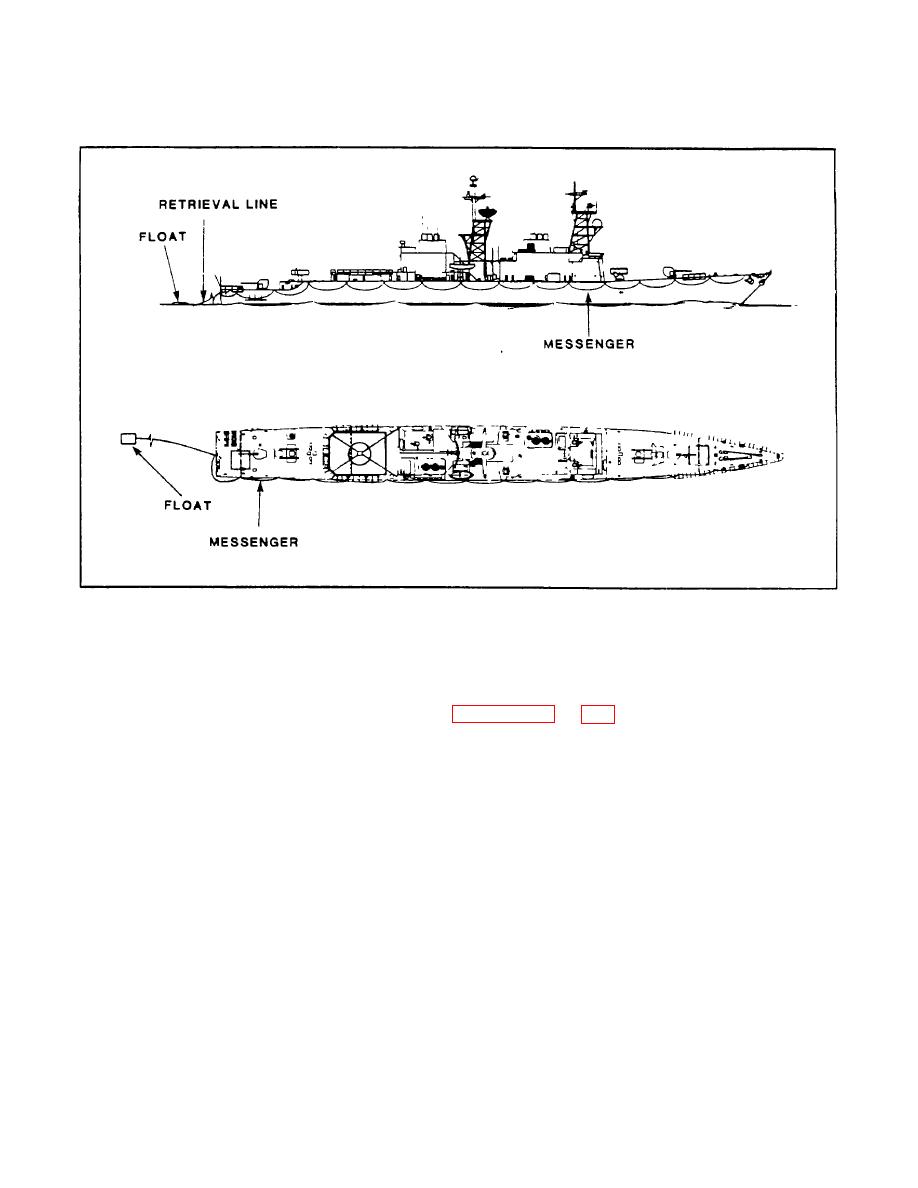
| Tweet |

Custom Search
|
|

|
||
 TB 55-1900-232-10
FIGURE 2-12. Secondary Towline System.
2-5 ARRANGEMENTS FOR TOW
Towing rigs can be made up in various configurations. See Figures 2-13 and 2-14 for the two principal types. Although
most Navy tows are simple, single-tug, single-unit operations, some tows are considerably more complex, consisting of a
single tug with multiple towed units. Occasionally the displacement of the towed unit is such that it requires utilization of
more than one tug. The use of tugs and their connection to the tows vary
2-5.1 SINGLE TUG, SINGLE TOW. There are three common variations of this configuration: the single hawser with
pendant, single hawser with bridle and towing alongside. The latter is used only in protected waters. A fourth variation,
pushing in the notch, is also a recognized method, but is not used by the Navy.
a. Pendant or Single Leg Rig. The pendant rig is the simplest and most straightforward rig and generally is used for
open ocean towing of ships with fine bows, sonar domes, bulbous bows or when the tow is most stable in this
configuration. All of the components are linked in a series. A distinguishing element of the pendant rig is the
deployment of a single chafing pendant to a single attachment point on the towed vessel. The pendant rig is usually
used for emergency towing. Outboard of the tow's fairlead, the chafing pendant usually is connected via a reaching
chain and/or a towing pendant to the tug's hawser. The advantage of the pendant rig is its ease of connection. There
is little, if any, likelihood of the pendant fouling on the cutwater or outer outboard structure
b. Bridle Rig. The bridle rig is characterized by a two-legged bridle instead of the single pendant on the towed vessel.
The length of each bridle leg should be approximately
2-20
|
||
 |
||